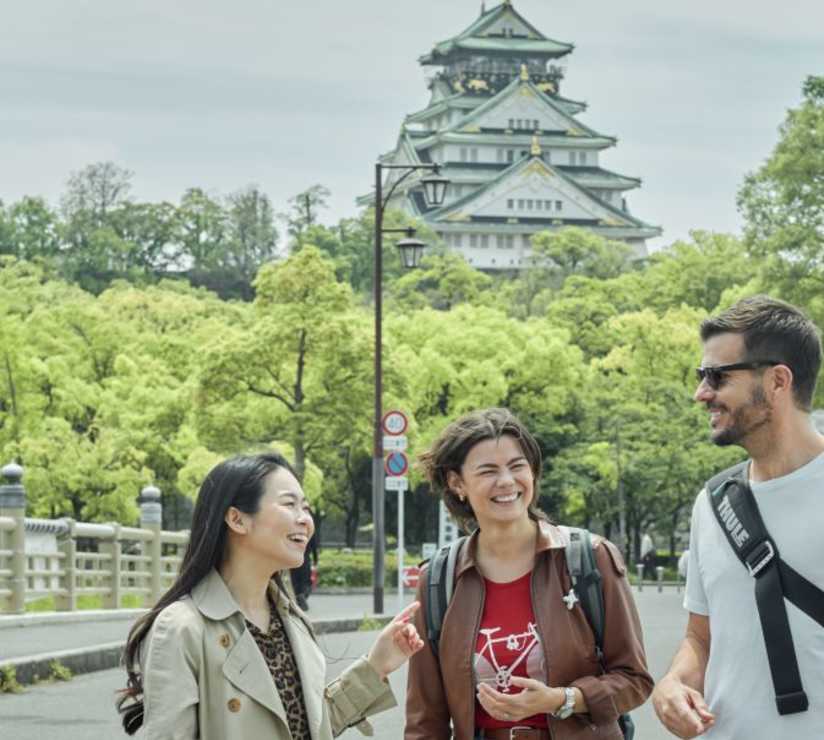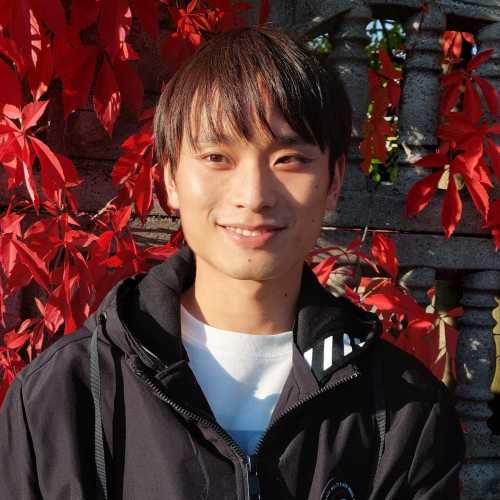Table Of Contents
- What's Around Osaka That's Worth Your Time?
- Quick Escapes by Train (And Why I Take Them Often)
- Temples That Don't Make the Postcards
- Street Food and Day Trips: My Two Favorite Combos
- Nature Near the Neon: When I Need a Break
- Pop Culture Detours Worth Making
- Osaka's Neighbor Cities That Locals Actually Visit
- How I Decide If a Place Is Worth the Trip
- A Different Kind of "Things to Do Near Osaka"

Sunset view of Osaka's skyline from the Umeda Sky Building's outdoor observation deck, with visitors silhouetted against the panoramic cityscape photo by 2560123289 on Shutterstock
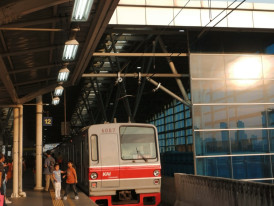
Train view leaving Osaka Station heading toward Kyoto in the morning light Photo by Fakhrul Fadillah on Unsplash
What's Around Osaka That's Worth Your Time?
If you're visiting Osaka and wondering what's just outside the city limits — I've got you covered. Not with another generic list of "must-sees" that you've already googled seventeen times, but with the places I actually go when I need to escape the neon lights and endless shopping arcades.
Here's the thing about Osaka: everyone tells you about the castle, the aquarium, and how you absolutely must try takoyaki. Fine. Do those things. But when you're done playing tourist in central Osaka, there's a whole different world waiting just a train ride away.
I'm talking about the temples that don't make it onto postcards. The street food spots where you won't hear a word of English. The nature trails where salarymen go to forget about their Excel spreadsheets. These are the things to do near Osaka that actually matter — at least to someone who's lived here long enough to know the difference between tourist bait and the real deal.

Rooftop garden at Osaka Station City Photo by ASIA CULTURECENTER on Unsplash
Quick Escapes by Train (And Why I Take Them Often)
The Art of the Local Train
Let me tell you something about train stations in Osaka — they're not just transport hubs. They're escape pods. Every morning at Osaka Station, you'll see two types of people: the ones heading to work and the ones heading anywhere but.
I'm usually in the second group on weekends.
The trick isn't knowing which trains to take (that's what Hyperdia is for). It's knowing which ones are worth taking. The Hankyu line heading north? That's your gateway to mountain temples and actual quiet. The Nankai line going south? Beach towns and seafood that hasn't been sitting in a display case.
Osaka Station City: Your Starting Point
People often overlook that Osaka Station City itself is worth exploring before you even board a train. The observation deck on the upper floors? Most tourists miss it completely. You can see the entire city spread out before you — from the Umeda Sky Building to Osaka Castle in the distance. It's the perfect way to orient yourself before deciding which direction to escape.
But don't linger too long. The real adventures start when you actually get on a train.
My Personal Train Hierarchy
Here's how I decide: If the journey takes more than 90 minutes, the destination better be spectacular. Between 30-60 minutes? Perfect for a half-day escape. Under 30 minutes? That's not a day trip — that's just going to a different neighborhood.
The beauty of living in this vibrant city is that you can go from watching suited businessmen rush through Umeda to watching rice farmers tend their fields in about 45 minutes. No exaggeration. That's the kind of contrast that makes you appreciate both the bustling city life and the quieter rhythms beyond it.
Station Life Lessons
Every small station tells you something about where you're headed. Lots of hiking boot advertisements? You're heading somewhere with trails. Pictures of fish everywhere? Coastal town. Station attendant looks surprised to see you? Congratulations, you've found somewhere actually off the beaten path.
I learned this the hard way after ending up in a town whose main attraction was a single vending machine. Still worth it for the story.
The Osaka Station City Secret
Here's something even locals don't always know: Osaka Station City has a rooftop garden that's perfect for killing time between trains. It's where I go when I arrive too early for my train (which is always, because my grandmother raised me right). You can grab a coffee, watch the trains come and go, and plan your escape route while surrounded by surprisingly good urban gardening.
Looking for a private city experience in Osaka?
Explore the city with a local who plans a private day just for you; no groups, no scripts.
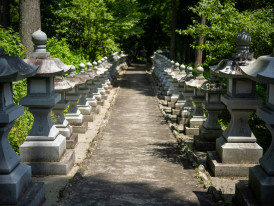
Stone lanterns lining temple pathway Photo by Kouji Tsuru on Unsplash
Temples That Don't Make the Postcards
The Ji Temple Circuit Nobody Talks About
Everyone knows about Kyoto's temples. What they don't know is that Osaka's surrounding areas have ji temples that are just as old, just as beautiful, and approximately 500% less crowded. These places preserve Japanese culture in its quietest form — no tour buses, no souvenir shops, just centuries of uninterrupted tradition.
Take Katsuoji Temple, about an hour north. It's famous for daruma dolls — thousands of them, staring at you with their blank eyes. Creepy? Maybe. But it's also where locals go when they need serious luck, not just Instagram photos.
Japanese History Without the Lecture
These smaller temples don't hit you over the head with their japanese history. There's no audio guide droning on about which warlord prayed here in 1582. Instead, you get monks going about their actual business, cats lounging on stone steps, and the kind of silence that makes you realize how noisy central Osaka really is.
I once spent an entire afternoon at Kanshinji Temple just watching the light change through the trees. Try doing that at Kiyomizu-dera without getting elbowed by a tour group. The Japanese culture here isn't performative — it just is.
The Unwritten Temple Rules
Here's what nobody tells you about visiting these places: The best time is Tuesday afternoon. Why? No weekend crowds, no school trips, and the monks seem more relaxed. Bring 100-yen coins for offerings. Don't take photos of people praying (this should be obvious, but apparently it's not).
And please, for the love of all that's sacred, don't touch the statues. I've seen too many tourists treating 800-year-old Buddhist sculptures like they're checking produce at the supermarket. This is Japanese history you can touch — but shouldn't.
My Three Temple Non-Negotiables
If you're going temple-hopping near Osaka, these are my essentials: comfortable shoes (those stone steps are murder), a small towel (for washing your hands at the entrance), and patience. Real temples aren't theme parks. They move at their own pace, preserving Japanese culture one quiet moment at a time.
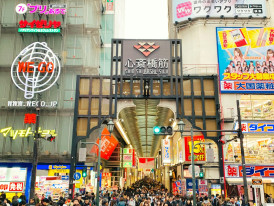
Busy shopping street during lunch hour Photo by yan yongqi on Unsplash
Street Food and Day Trips: My Two Favorite Combos
Beyond Takoyaki: The Real Street Food Scene
Look, I love takoyaki as much as the next Osakan, but if that's all you're eating on your day trips, you're doing it wrong. Every town around Osaka has its own street food specialty, and most of them involve delicious food you've never heard of.
In Sakai, it's kitsune udon with fried tofu, so sweet it tastes like dessert. In Kishiwada, it's danjiri-meshi — rice balls the size of your fist, wrapped in seaweed and stuffed with whatever the vendor feels like that day. No English menus, no pictures, just point and pray.
The Green Onions Gospel
Here's a tip: if you see green onions on something, order it. Negi (that's green onions to you) around here isn't just a garnish — it's a religion. I've seen tourists pick them off their food like they're avoiding vegetables at dinner. Those tourists are wrong.
The best okonomiyaki isn't in Dotonbori. It's in a covered shopping arcade in Takarazuka where an 80-year-old woman has been making the same savory pancakes for 40 years. She'll load them with green onions whether you ask or not. Trust her judgment. This is old school cooking at its finest — no Instagram-worthy presentation, just decades of perfected technique.
My Day Trip Food Strategy
Rule one: Eat breakfast before you leave Osaka. Not because the food tour starts early, but because you need stomach space for what's coming. Rule two: Follow the locals. If you see a line of people in work uniforms at 11:30 AM, get in that line. Rule three: Everything's better deep fried, but pace yourself.
I once tried to eat my way through all of Ikeda's food stalls in one day. Made it to stall number seven before admitting defeat. The momiji tempura (deep-fried maple leaves — yes, really) finished me off. But what delicious food it was on the way down.
The Unspoken Food Tour Rules
Nobody runs a formal food tour in these neighborhoods. You make your own. Start at the station, work your way out in circles. The good stuff is usually three blocks from the main drag, where rent is cheaper and recipes haven't changed since the Showa era. These shopping streets hide the best secrets.
And here's something the guidebooks won't tell you: Wednesday through Friday, around 3 PM, that's when the housewives come out for their afternoon snack. Follow them. They know every hidden gem in a five-kilometer radius.
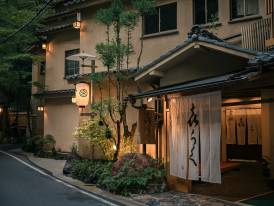
Simple capsule hotel in mountain area. Photo by Gavin Li on Unsplash
Nature Near the Neon: When I Need a Break
Osaka Bay: More Than Just Universal Studios
Everyone sees Osaka Bay from the train on their way to Universal Studios Japan. What they don't see is what's beyond the wizarding world and roller coasters. The Bay Area has pockets of actual nature — walking trails, bird sanctuaries, spots where you can pretend this vibrant city's population isn't 2.7 million.
Nanko Bird Sanctuary is my personal favorite. It's like someone dropped a piece of wilderness in the middle of an industrial zone. Weird? Yes. Worth it? Also yes. Especially during migration season when birds from Siberia stop by, probably as confused as you are about why there's nature here.
The Osaka Aquarium Alternative
Look, the Osaka Aquarium is impressive. I get it. But if you want to see marine life without the crowds and the admission fee that makes your wallet cry, head to the fishing ports around Osaka Bay. Early morning at Tajiri Port, you can watch the fishing boats come in with their catch. It's not as polished as the Osaka Aquarium, but it's real.
The fishermen don't mind if you watch, as long as you stay out of the way. Sometimes they'll even explain what they've caught. No glass walls, no whale sharks, but plenty of local color and fish that'll be on dinner plates by evening.
Cherry Blossom Season Without the Crowds
When cherry blossom season hits, every man, woman, and child in Osaka heads to Osaka Castle Park. Me? I take a 40-minute train ride to Daisen Park in Sakai. Same cherry blossoms, 90% fewer people, and you can actually sit under a tree without someone's elbow in your face.
The locals there are used to Osakans escaping to their park. They've even set up extra yakitori stalls during hanami season. It's like they know we're coming and can't survive without grilled chicken on sticks. The cherry blossoms here bloom a few days later than in the city — insider knowledge that'll save you from disappointment.
Walking Distance from Chaos
Here's what I've learned about nature in Osaka: It's always closer than you think. Every neighborhood has some forgotten park, some riverside path, some spot where the concrete gives way to green. You just have to look up from your phone long enough to find it.
My favorite walking route starts at Sumiyoshi Taisha (yes, it's technically in Osaka, but bear with me) and follows the Yamato River south. Within 20 minutes, you've left the bustling city behind. Within 40 minutes, you're wondering if you took a wrong turn. You didn't. Keep walking.
The Capsule Hotel Hiking Hack
Here's a trick: Some of the best hiking areas near Osaka have capsule hotels at the trailheads. Sounds weird, but it works. You can take an evening train out, stay overnight for the price of a fancy dinner, and hit the trails before the day-trippers arrive.
I discovered this accidentally when I missed the last train back from Mount Kongo. The capsule hotel there has an onsen. I've been "missing" that last train ever since. Some capsule hotels even have observation decks where you can watch the sunrise before your hike. It's the kind of old school travel hack that makes you feel clever.
What if your day in Osaka was planned by someone who knows it — and you?
City Unscripted matches you with a local host who creates a private experience based on your interests, not a set route.

Traditional shrine buildings at Namba Yasaka. Photo by Alen Denisova on Unsplash
Pop Culture Detours Worth Making
When Harry Potter Meets Old Osaka
Okay, I'll admit it — even this skeptical local was curious about the Harry Potter attractions near Universal Studios Japan. But here's the thing: you don't need to pay theme park prices to get your wizarding world fix. The shopping streets around the park have gone full Harry Potter crazy, with themed cafes and shops that don't require admission.
Is it touristy? Absolutely. But watching elderly shop owners attempt British accents while serving "butterbeer" (really just cream soda with butterscotch) in their 50-year-old cafes? That's the kind of pop culture collision that makes this incredible city what it is.
Namba Yasaka Shrine: Instagram Bait with History
I used to avoid Namba Yasaka Shrine because every travel blogger won't shut up about the giant lion head. But you know what? It's actually worth seeing, especially if you go early in the morning before the influencers arrive. The shrine itself dates back to the 1600s — proper Japanese history hiding behind a pop culture facade.
The priests there have embraced the Instagram fame with good humor. They even sell fortunes specifically for "going viral" now. Is it traditional? Not really. Is it quintessentially modern Osaka? Absolutely.
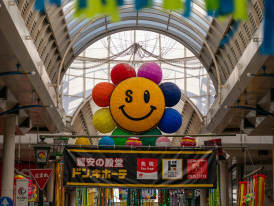
Empty shopping arcade on weekday afternoon. Photo by Kouji Tsuru on Unsplash
Osaka's Neighbor Cities That Locals Actually Visit
Nara: Beyond the Deer
Yes, everyone goes to Nara for the deer. Fine. But while tourists are buying deer crackers and getting head-butted by aggressive does, locals are hiking Wakakusa Mountain or eating kakinoha-zushi in Naramachi.
The deer are cute for about 15 minutes. The old merchant district, with its narrow alleys and houses that haven't changed in 200 years? That's where you should spend your time. Plus, fewer deer means fewer deer droppings. You're welcome. This is where local life actually happens, away from the tourist circus.
Kobe: Not Just About the Beef
Kobe gets typecast as "that place with expensive beef." Sure, the beef is good if you've got 10,000 yen burning a hole in your pocket. But local life in Kobe is about the harbor views, the sake breweries in Nada, and Chinatown where the xiaolongbao rivals anything in Shanghai.
Take the Hankyu line, not JR. It's five minutes longer but drops you right in the middle of everything. And skip the beef. Get the Akashiyaki instead — like takoyaki but better, served in dashi broth that'll make you question everything you thought you knew about street food. The observation deck at Kobe Port Tower gives you views that rival any in Osaka.
Wakayama: The Day Trip Nobody Makes
Here's my favorite hidden gem among day trips: Wakayama. An hour and a half south, and most tourists have never heard of it, which is perfect. Wakayama Castle is everything Osaka Castle wishes it was — original, uncrowded, and surrounded by streets that feel stuck in 1955.
The ramen there is different too. Wakayama ramen has this pork bone and soy sauce combination that sounds wrong but tastes right. There's a shop near the station where they've been making it the same way since my parents were kids. No Instagram account, no English menu, just ramen that makes the train ride worth it.
The Neighbor City Secret
Want to know the real secret about trips from Osaka? Tuesday through Thursday. That's when you go. Weekends are for tourists and families. Mondays, lots of places are closed. But midweek? That's when these cities show their real faces.
I learned this from my grandmother, who used to drag me to Kyoto every Wednesday when I was a kid. "Less people, better service, same temples," she'd say. She was right then. Still right now. Even the shopping streets feel different on a Tuesday afternoon.
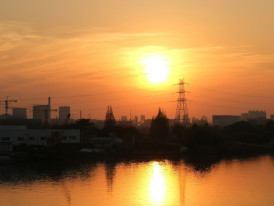
Industrial district sunset view Photo by nathan Q on Unsplash
How I Decide If a Place Is Worth the Trip
The 90-Minute Rule
Here's my personal metric: If it takes more than 90 minutes to get there, it better change my life. Or at least my day. This sounds harsh, but when you live in Osaka, you've got to be selective. There are a thousand "hidden gems" within two hours. Not all gems are worth finding.
I once spent three hours getting to a "secret" waterfall that turned out to be a trickle running down a concrete wall. Never again. Now I check photos, but more importantly, I check who's recommending the place. Travel bloggers who've been here a week? Pass. Old guy at the local izakaya who's lived here forever? I'm listening.
Weather, Crowds, and Other Deal-Breakers
Rainy season? Skip the hiking trails unless you enjoy being a mosquito buffet. Golden Week? Don't go anywhere unless you love crowds more than life itself. August? Only places with air conditioning or ocean breezes.
But here's the thing — sometimes the "wrong" time is the right time. Arashiyama in the rain is moody and empty. Beach towns in winter have the best seafood and no tourists. You just have to match your expectations to reality. The Osaka Aquarium is actually better on a rainy Tuesday than a sunny weekend.
The Local Test
My ultimate test for whether a place is worth visiting: Would I take my grandmother there? She's seen everything within 100 kilometers of Osaka, has opinions about all of it, and doesn't suffer fools or tourist traps.
If I think she'd enjoy it — not tolerate it, but actually enjoy it — then it's worth your time too. This has saved me from countless mediocre temples, overpriced restaurants, and "authentic" experiences that are anything but. She's particularly harsh on places that claim to preserve Japanese culture but are really just gift shops with temple decorations.
Making Your Own Judgment Calls
Look, I can tell you about all these places, but you've got to develop your own radar. Start with my suggestions, sure, but pay attention to what actually resonates with you. Maybe you're into industrial architecture (try the factory districts of Amagasaki). Maybe you like obscure museums (the Instant Ramen Museum in Ikeda is actually fascinating).
The point is, the best day trips from Osaka aren't in any guidebook — they're the ones where you follow your own weird interests and see where they lead. Want to visit Osaka like a local? Stop trying to see everything and start trying to understand something.
Tip
We match you with the right host, not just any guide.Want to experience the real Osaka with someone who lives there?
A fully private experience, planned and led by a local host who tailors the day to you
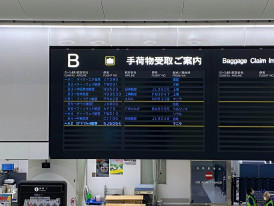
Train platform sign showing multiple destinations Photo by Suzi Kim on Unsplash
A Different Kind of "Things to Do Near Osaka"
Beyond the Obvious
So there you have it — my entirely biased, occasionally grumpy guide to escaping Osaka without really escaping. These aren't the trips that'll get you the most Instagram likes. The Universal Studios Japan crowds won't miss you. The Osaka Aquarium will survive without your admission fee (though honestly, if you haven't been, it's worth seeing once — just go on a weekday).
But these are the trips that'll show you what this incredible city is really about. Not just the neon lights and shopping streets, but the rhythm of life that extends beyond the city limits. The way a bustling city can turn into rice fields in 30 minutes. The way ancient temples and pop culture coexist without anyone batting an eye.
The Real Osaka Experience
I've lived here my whole life, and I'm still finding new places to explore. Last week, I discovered a ji temple that's been 20 minutes from my apartment for decades. Next week, I'm checking out a beach town someone mentioned at my local coffee shop.
That's the thing about living in or trying to visit Osaka — it's not just about checking off attractions. It's about understanding that the best experiences often happen in the spaces between the famous sites. In the small stations, the train conductor knows everyone by name. In the shopping arcades where the same families have been selling the same things for generations. In the moments when you realize this vibrant city has layers you'll never fully uncover.
Your Turn to Explore
Whether you're into temples, takoyaki, or just train rides with views — there's plenty near Osaka. You just have to look past the obvious. Skip the tours that promise to show you "real" Japan in six hours. Make your own food tour by following your nose and your stomach. Find your own secret temple by getting on a train and seeing where it goes.
And when you find that perfect spot — the one that makes you understand why people fall in love with this part of Japan — keep it to yourself for a while. Some secrets are worth savoring before they end up on everyone's must-see list. The best Osaka Aquarium isn't the famous one — it's the moment you discover your own special place.
The Final Station
One last piece of advice: Don't try to do everything. This isn't a checklist to be completed. It's a starting point for your own adventures. Pick one direction, one train line, one type of food, and go deep instead of wide.
Because the best things to do near Osaka aren't really about the destinations. They're about the journey — the random conversations on trains, the wrong turns that lead to right places, the moments when you realize that Osaka experiences are more than just castle visits and city lights.
And if you're wondering about all the practical stuff — the train schedules, the entrance fees, the things to know when visiting Osaka — you can figure that out as you go. That's part of the adventure. Just remember to bring coins for the temple offerings and an empty stomach for the street food. Oh, and comfortable shoes. The old school way of exploring means a lot of walking.
Epilogue: Next Time You're at Osaka Station
Next time you're standing in Osaka Station, surrounded by the usual chaos of commuters and shop announcements, look up at the departure boards. See all those destinations you've never heard of? Pick one. Any one. Buy a ticket, get on the train, and see where it takes you.
That's how the best adventures start — not with a plan, but with curiosity and a willingness to get slightly lost. And if you end up somewhere disappointing? Well, there's always another train back. That's the beauty of exploring near Osaka: you're never too far from home, but always far enough to find something new.
The wizarding world of Harry Potter can wait. The Osaka Aquarium isn't going anywhere. But that perfect bowl of ramen in a town you can't pronounce? That old school vendor who's been making the same snack for 40 years? That observation deck nobody knows about? Those things won't wait forever.
Welcome to my Osaka. Now go make it yours.
Ready to plan your perfect day in Osaka?
Start your experienceWhat if your day in Osaka was planned by someone who knows it — and you?
City Unscripted matches you with a local host who creates a private experience based on your interests, not a set route.
Want to experience the real Osaka with someone who lives there?
A fully private experience, planned and led by a local host who tailors the day to you
